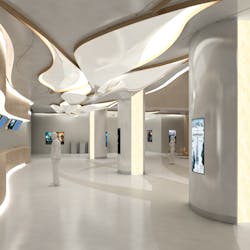At NAB 2018 in Las Vegas, Crystal will demonstrate its VidTime synchronizing technology for distributed playout and dynamic ad insertion. It's intended to let users personalize graphics and replace ads on any video channel distributed via cable, satellite or over-the-top (OTT).
Crystal will take a live linear TV channel streamed over a consumer subscription service that contains no ad break signaling and redecorate it with SCTE 104/35 ad break markers. Crystal will then use those markers to replace the original ads with different ads of the same length.
For the demo, Crystal Connect will be used to communicate with the origin playout automation system to extract program information and timing. Schedule event data will be matched to VidTime temporal fingerprints taken at the origin. The VidTime temporal fingerprints and event data will be sent out-of-band to the Crystal Metadata Cloud and then delivered to Crystal's booth at NAB where it will be used to identify specific video frame synchronization and reestablish timing. Once the timing is reestablished, event data will be used to recreate the payload of the original SCTE markers. Crystal will use its own SCTE 104 inserter to put the SCTE messages back into the OTT-sourced HDMI. With SCTE markers in place, Crystal will use third-party tools to replace ads and display custom graphics.
Crystal will also show countdown times to ad breaks and other video metadata that is only known at the video origination point. All of this information will be available to broadcasters for their own platforms, or to be accessed by broadcaster partners via the Crystal Metadata Cloud.
Roger Franklin, CEO, Crystal, said: "The promise of dynamic ad insertion brings a number of challenges for traditional linear broadcasters and new OTT services. Often the original ad break messaging cannot be maintained through a transmission chain. It is either stripped out, corrupted or delayed. Crystal VidTime technology can be used to recreate the original messaging even if the received signal has undergone multiple encodings, scalings and conversions."
VidTime can also be applied to signal monitoring to detect delays or discrepancies between monitoring points both local and remote. It can also be used to detect and correct lip sync errors, synchronize disaster recovery playout, drive customized workflows and third-party applications.





